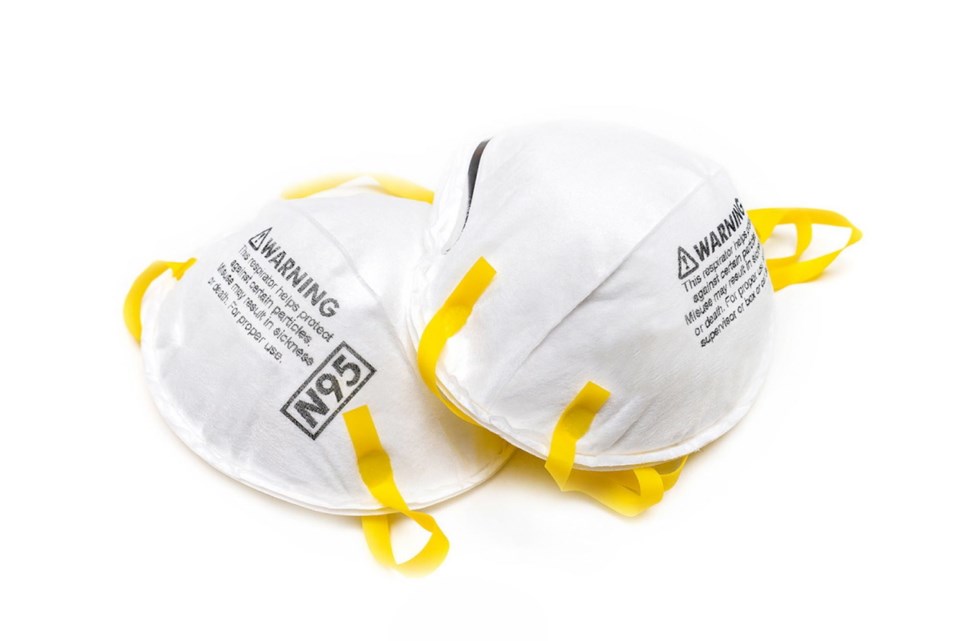The government agency in charge of setting and enforcing the rules for reopening businesses closed by the pandemic can’t afford to help businesses buy protective equipment because it has lost almost all its $3 billion surplus in the recent stock market collapse.
Labour Minister Harry Bains said WorkSafeBC cannot use a large surplus accumulated over many years to give partial refunds to employers on masks, gloves, Plexiglas shields and other safety gear, as suggested by the Opposition Liberal party.
“WorkSafeBC is not immune to COVID-19 either, their investments have sunk to almost zero when it comes to the surplus money they are sitting on,” Bains told Postmedia. “So almost all of the surplus has been wiped out a couple weeks ago because of our stock market, and that’s where the money was invested.”
WorkSafeBC’s last publicly available annual report, from 2018, pegged the surplus at almost $2.9 billion.
“It was wavering between $2 [billionl] or $3 billion,” said Bains. “It’s almost all gone.”
The agency, which is responsible for workplace insurance, injury claims and safety regulations, likely could not have purchased the protective gear anyway, because provincial law states the surplus can only be spent on certain things.
The loss of the WorkSafeBC’s surplus does not leave the organization in an immediate financial crisis.
The agency is funded by employer premiums and has enough money to cover past, current and estimated future workplace injury claims, plus an additional financial cushion for an economic downturn, according to its financial documents. However, premium revenue has also dropped approximately $400 million this quarter due to mass business closures and layoffs.
Bains said WorkSafeBC can still hit its target of having a ratio of assets over liabilities of at least 130 per cent. Before the pandemic, it had been as high as 156 per cent, meaning the loss has knocked WorkSafeBC back to 2015 financial levels. The organization said in a statement it will not know the full impact of COVID-19 on its finances for some time.
The reduced financial cushion comes as WorkSafeBC is elevated to one of the most high-profile organizations in the province. Premier John Horgan this month gave it responsibility for setting the safety rules needed so businesses like restaurants, gyms, cafés and agencies like libraries could start reopening. WorkSafeBC is also in charge of enforcing those rules and has doubled its inspection rate during COVID-19 compared to last year.
The disappearance of the surplus has disrupted the NDP government’s plan to introduce legislation this year to modernize the worker benefits system using the surplus money.
The province had hired an outside expert to work with business and organized labour to find common ground on reforms to spend the surplus, such as increasing workers’ compensation benefits to match the rate of inflation and raising the statutory maximum salary used to calculate benefits in a claim.
WorkSafeBC may also get increased responsibilities if Horgan is unable to persuade Prime Minister Justin Trudeau to launch a national program to pay employees who get sick during the pandemic. Horgan has said B.C. will go it alone if Ottawa does not step up. Bains said one option for B.C. could be to expand WorkSafeBC’s mandate to include sick pay.
The steep loss of investment income is not unique to WorkSafeBC, with other organizations and pension funds hard hit by stock markets over the past two months, said Bains. ICBC reported this month it could lose $1 billion due to investment declines.
WorkSafeBC also by law maintains an “accident fund” for its claims. That fund, which was almost $18 billion, is invested by the B.C. Investment Management Corporation, which handles public sector pensions and investments.
In good years, the fund has generated more than $1 billion in interest and returns annually. But the recent market volatility has caused double-digit drops in global stock markets.
B.C.’s business and labour leaders have argued for years what to do with WorkSafeBC’s surplus, with suggestions it be returned to employers, used to drive down rates or invested in worker programs. The surplus began accumulating in the early 2000s when the then-Liberal government reduced benefits.
“We are concerned it’s gone, but the 130 per cent ratio is still intact, so they still have that 30 per cent cushion beyond what they need to operate,” said Ken Peacock, chief economist for the B.C. Business Council.
The president of the B.C. Federation of Labour, Laird Cronk, said he’s not heard directly from government about any change to the surplus, but has long advocated it be used to restore worker benefits. “They built the surplus on the backs of injured workers, and nobody in our view should be using the surplus for anything until those compensation services are properly restored and funded,” said Cronk.



